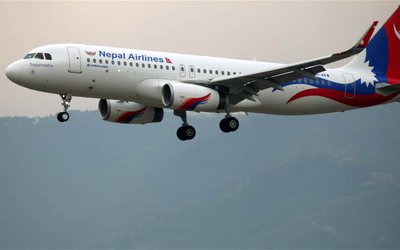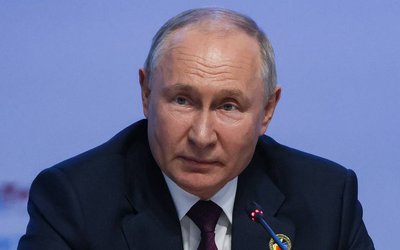More on Opinion




It’s amazing to see over 200 members of the MSM, TG and LGBTI community from all over the country, gathered here, to deliberate on a single issue that affects everyone. The issues related to MSM, TG and LGBTI continue to be very relevant in the HIV and AIDS response in Nepal. And as Nepal will be drafting its National Action Plan on AIDS for the next couple of years, this also comes at a very timely manner. I trust that the results of this consultation will inform the strategic priorities of the country’s response on HIV and AIDS- be it in the area of policy formulation, education & targeted prevention program, care & treatment- and with corresponding resources allocated.
There is an increasing number of studies and reviews that had been carried out in South Asia including Nepal, about the risks and vulnerabilities of MSM, TG and LGBTI to HIV infection. While there is a call to design and conduct further studies to fill in the information gap about TG and LGBTI and their environment, there had been encouraging development, according to the recently published review entitled Lost in Transition: Transgender people, Rights and HIV Vulnerability in the Asia Pacific Region”, released by UNDP last month. This development includes: a developing transgender identity, a growing pride and an increasing willingness on the part of transgender communities to advocate for increased participation in policy processes and organize peer support services at the national and local level. In Nepal, the establishment of BDS, an advocacy network of community-based organization working dedicatedly to empower and strengthen the MSM, TG and LGBTI community had been a laudable initiative. And under the leadership of BDS, we have seen so much progress.
Amidst all these efforts however, we know that on the ground, especially here in Nepal, MSM, TG and LGBTI are not universally being reached yet for continuum of HIV prevention/education, treatment and care services. And why is this so? Let me point some key reasons and some actions being done now, as far as I know.
First, Nepal’s socio-cultural environment is just starting to be friendly to the cause of MSM, TG and LGBTI. Significant progress in the area of HIV related human rights had been achieved. For example, in 2007 the Supreme Court had issued a ruling on identify cards for the third gender and the equality rights of LGBTI population in Nepal. In the recent discussion in the development of the new Constitution, anti-discrimination provisions had been included. Lawyer Prem from BDS had been very much engaged in this.
Progress is also evident in discussions between UN partners, government agencies and civil society organizations. For example, the National Human Rights Commission of Nepal has agreed with support from the Prime Minister’s Office and Blue Diamond Society to include sexual orientation and gender identity in its portfolio on minorities.
Nonetheless, when we go to the field, the scene is still different. For example, I meet members of the MSM, TG, LGBTI community in Pokhara and in Morang and some of their feedback are disturbing. Most still experience verbal abuse, discrimination and rejection primarily because of their sexual orientation. Full access to HIV and AIDS services is still a challenge. So we need to continue to support the translation of those policy pronouncements into action- in the ground. We need to “walk the talk”, as I often say.
Second, there is still inadequate targeted research on TG and LGBTI. This significantly impedes access to health services and blocks effective and timely response to HIV. An inclusive research, designed and implemented in partnership with the community, is imperative. Moreover, there is still a lack of understanding of the universe of MSM, TG and LGBTI, not only in Nepal but in the whole Asia. To help address this, the regional DIVA project supported by Global Fund, is embarking on generating more quantitative and qualitative evidences about MSM, TG and LGBTI. This will help us redesign our program and be more responsive to the genuine needs of the community.
Third: There is yet no separate approach to MSM, TG and LGBTI. These communities are lumped into one “salad”, rather than a targeted intervention customized to the growing needs and realities of the community. In the new NSP 2012-2016, one of the priority strategies is related to MSM/TG. Note that TG continues to be part of “MSM” when studies had shown that the needs and vulnerabilities of TG and LGBTI in the context of HIV, is different. So in the development of the National Action Plan on AIDS, or the operational plan to translate the NSP into activities and actions, we need to ensure that a more specific approach and set of activities for TG and LGBTI will be incorporated. This is an opportunity we should not miss.
And fourth, which is a very specific challenge in Nepal, is the area of advocacy for action. There is competing priorities for leaders in Nepal to take action on issues related to MSM, TG and LGBTI in the context of HIV prevention and human rights program. When we talk to leaders, either individually or in groups, they all agree that the issue has to be put forward, debated and acted upon. But with the long list of national priorities-- be it in constitution drafting, rule of law, citizenship, food insecurity, economic progress, good governance, etc- which are all core and very fundamental in Nepal’s development- the issue of MSM, TG and LGBTI could easily be dwarfed or sidelined.
So clearly, the issues, barriers and challenges that the UN faces in advancing the MSM, TG and LGBTI HIV and Human Rights program are the same as what everyone of us in this room faces. We hurdle strong cultural beliefs and biases that oftentimes hamper effective HIV program. Our response is shaped by the political and legal environment. To a certain extent, from the UN- the level could be different as we do not experience, first-hand, ground-level discrimination and stigma as community members experience. So in a sense, it is less difficult. But we continue to pursue what we believe in- the universal rights of every individual regardless of color, creed, religious affiliation and gender- at relevant district, national, regional or international forum.
UNAIDS family continue to stand ready in supporting the country realize its national vision, goal and targets as enshrined in the 2012-2016 National Strategy on HIV/AIDS. The UN has clear mandate and comparative advantage to assist the country in effectively responding to HIV and AIDS. In Nepal, the 10 UNAIDS Co-sponsors are present. And lately, the UN Women also became a UNAIDS Cosponsors, so now we are 11. Under our agreed Division of Labor, the empowerment of men who have sex with men and transgender people to protect themselves from HIV and to fully access antiretroviral therapy is being convened by UNDP. So we welcome the strategic support of UNDP Nepal in this area, together with the rest of the member of the UN Joint Team on AIDS.
Filio-Borromeo is UNAIDS Country Coordinator Nepal. This is excerpts of a key note speech delivered at a program on Issues, Barriers and Challenges faced by UN agencies to advance MSM, TG, LGBTI HIV and Human Rights





